This set of Industrial Engineering Multiple Choice Questions & Answers (MCQs) focuses on “Standardization and Interchangeability – Set 2”.
1. The larger and smaller dimensions of a hole and shaft are termed as higher and lower limits.
a) True
b) False
View Answer
Explanation: The larger dimension of a hole and shaft are termed as higher limits of hole and shaft respectively and that of smaller dimensions as lower limits of hole and shaft respectively. The term basic dimension is the basis for both the higher and lower limits. Both the higher and lower limits are defined with reference to the basic size.
2. The difference between the basic size and the higher limit is ____________
a) Lower deviation
b) Upper deviation
c) Basic deviation
d) Tolerance
View Answer
Explanation: The upper deviation is defined as the difference between the higher limit and the basic size. The following mathematical equations clearly explain the concept of Limits.
Higher limit of shaft/hole = Basic size of shaft/hole + Upper deviation of shaft/hole
Lower limit of shaft/hole = Basic size of shaft/hole – lower deviation of shaft/hole
The following figure illustrates the same below:
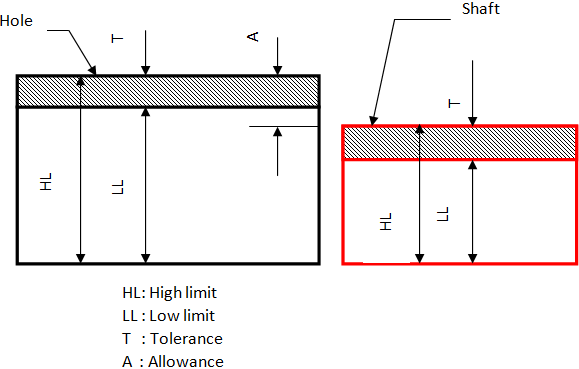
3. In the below figure, the term HL means __________________
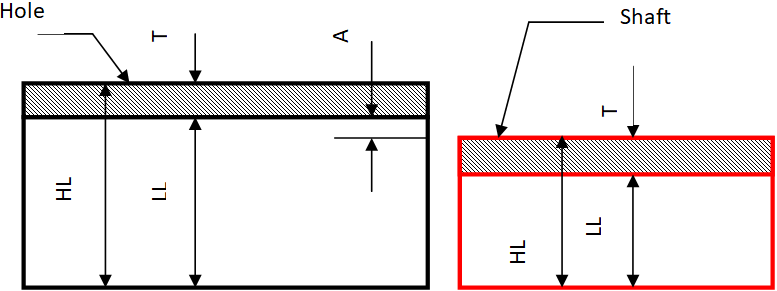
a) Higher limit
b) Lower limit
c) Upper deviation
d) Lower deviation
View Answer
Explanation: The higher limit is the largest dimension of the component. Mathematically, it is given as follows
Higher limit = Basic size + Upper deviation
It should be noted that the higher limit can be greater or smaller than the basic size.
4. The relationship between mating parts is called fit.
a) True
b) False
View Answer
Explanation: The relation between the two mating parts is known as a fit. Based on the actual limits of hole or shaft sizes, fits may be classified as clearance fit, transition fit and interference fit.
5. The empirical relation for standard tolerance unit is __________________
a) i = 0.45 × ∛D + 0.001 D
b) i = 0.45 × ∛D – 0.001 D
c) i = 0.45 + ∛D × 0.001 D
d) i = 0.45 × ∛D × 0.001 D
View Answer
Explanation: The fundamental tolerance is a function of the nominal size and its unit is given by the empirical relation
Standard tolerance unit, i = 0.45 × ∛D + 0.001 D
Where i is in microns and D (in millimeters) is the geometric mean of the limiting values of the basic steps mentioned above.
6. Find the standard tolerance unit (i) for the step size 80 to 120 mm.
a) 2.999 μ
b) 2.172 μ
c) 1.172 μ
d) 0.175 μ
View Answer
Explanation: Given,
Step size = 80 to 120
Geometric mean, D = √(80 × 120) = 98 mm
Standard tolerance unit, i = 0.45 × ∛D + 0.001 D
Where i is in microns and D (in millimeters) is the geometric mean of the limiting values of the basic steps mentioned above
∴ i = 0.45 × ∛98 + 0.001 × 98 = 2.172 μ.
7. The difference between the minimum size of the hole and the maximum size of the shaft in a clearance fit is called _______________
a) Minimum clearance fit
b) Allowance
c) Minimum clearance fit or allowance
d) Maximum clearance fit
View Answer
Explanation: The difference between the minimum size of the hole and the maximum size of the shaft in a clearance fit is called Minimum clearance fit or allowance. It is shown in the figure below

8. Transition fit can be due to either interference or a clearance.
a) True
b) False
View Answer
Explanation: Depending on the actual values of the tolerance of individual parts, Transition fit can be due to either interference or a clearance. The following figure clearly depicts the transition fit due to clearance and interference.
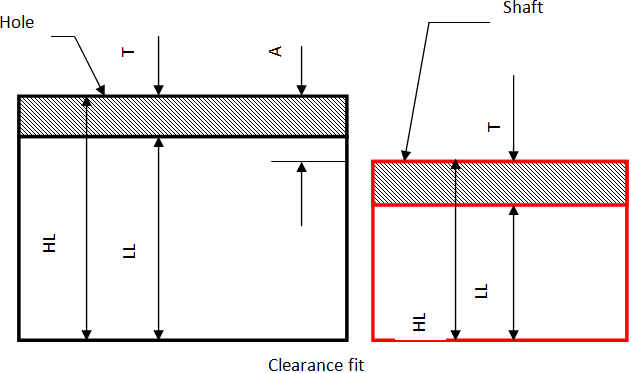
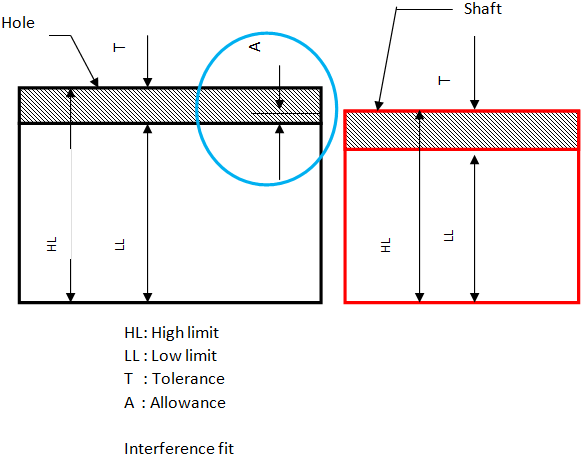
9. The condition in which a feature of size contains the maximum amount of material within the stated limits of size is called ____________________
a) Maximum material condition
b) Minimum material condition
c) Maximum interference
d) Minimum interference
View Answer
Explanation: The condition in which a feature of size contains the maximum amount of material within the stated limits of size is called maximum material condition. For a shaft, the upper limit is the maximum material condition and for a hole, the lower limit is the maximum material condition.
10. _____________ is the minimum material condition for a shaft.
a) Upper limit
b) Lower limit
c) Upper deviation
d) Lower deviation
View Answer
Explanation: Minimum material condition is the condition in which a feature of size contains the minimum amount of material within the stated limits of size. For a shaft, the lower limit is the minimum material condition and for a hole, the upper limit is the minimum material condition. It is clearly illustrated in the figure below:
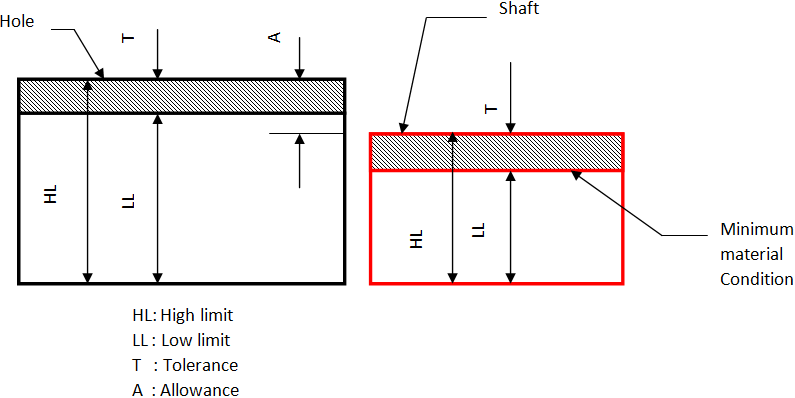
Sanfoundry Global Education & Learning Series – Industrial Engineering.
To practice all areas of Industrial Engineering, here is complete set of 1000+ Multiple Choice Questions and Answers.
If you find a mistake in question / option / answer, kindly take a screenshot and email to [email protected]
